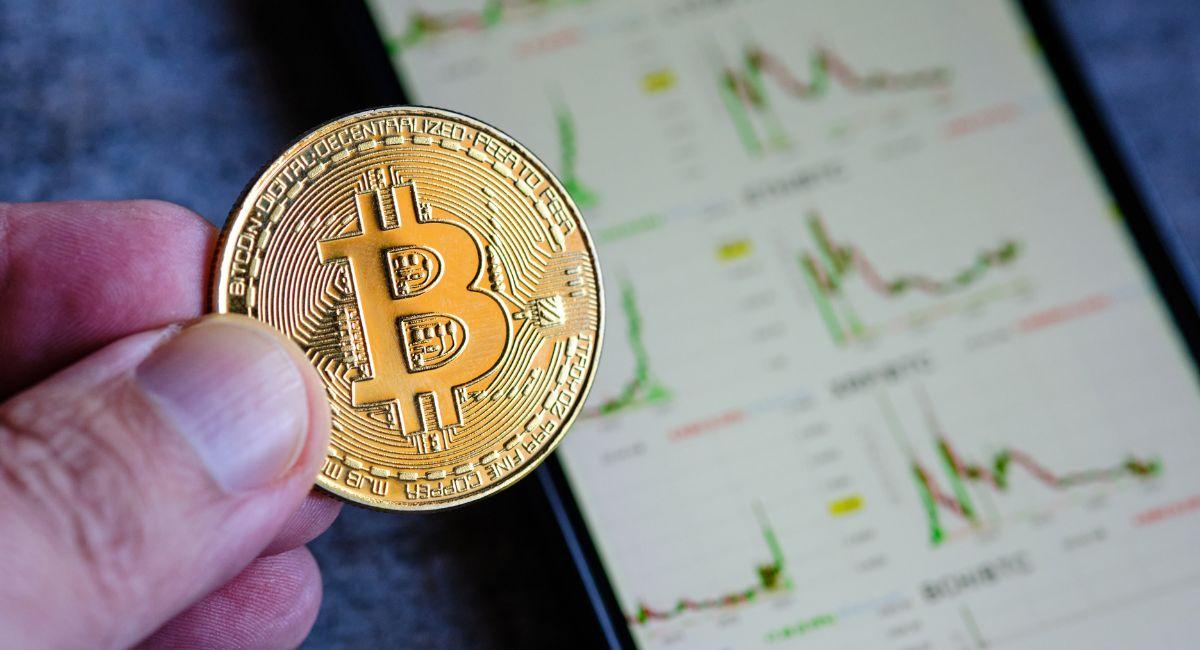Top 10 Importance Of Community Funds In The Blockchain world

The blockchain world represents a decentralized and distributed landscape characterized by the revolutionary technology of blockchain. Blockchain, at its core, is a secure and transparent ledger that records transactions across a network of computers. This world is defined by key principles such as decentralization, immutability, transparency, and cryptographic security.
Decentralization is a fundamental aspect of the blockchain world, where no single entity has control over the entire network. Instead, transactions are verified by a network of nodes, ensuring a distributed and resilient structure that mitigates the risks associated with centralization.
Immutability is another hallmark, meaning that once a block of transactions is added to the blockchain, it cannot be altered or deleted. This is achieved through cryptographic hashing and consensus mechanisms, providing a tamper-resistant record of transactions.
Transparency is inherent in the blockchain world, with the entire transaction history visible to all participants in the network. This transparency fosters trust among users and eliminates the need for intermediaries in various processes.
Cryptographic security ensures the integrity and confidentiality of transactions. Public and private keys are employed to authenticate participants, securing the ownership and transfer of assets on the blockchain.
The blockchain world extends beyond its foundational technology to encompass diverse applications and industries. It has disrupted finance with cryptocurrencies like Bitcoin, introduced decentralized finance (DeFi) platforms for lending and trading, revolutionized supply chain management through traceability, and created non-fungible tokens (NFTs) for unique digital asset ownership.
The Ethereum blockchain, with its smart contract functionality, has empowered developers to build decentralized applications (DApps), enabling programmable and automated agreements. Interoperability initiatives aim to connect different blockchains, fostering collaboration and expanding the blockchain world’s reach.
Despite its transformative potential, challenges such as scalability, energy consumption, and regulatory considerations persist. As the blockchain world evolves, ongoing innovation, collaboration, and the exploration of sustainable solutions will shape its future trajectory. The blockchain world is a dynamic and evolving ecosystem that holds promise for redefining how we transact, collaborate, and organize data in a decentralized and secure manner.
Also, read- 9 Steps To Follow When You Are Raising Funds With Cryptocurrency
What are Community funds in the blockchain world?

Community funds in the blockchain world refer to pools of resources collectively owned and managed by a community of users, typically governed by decentralized and transparent protocols encoded in smart contracts. These funds play a crucial role in fostering community-driven initiatives, supporting development projects, and enabling decentralized decision-making within blockchain ecosystems.
Community funds in the blockchain space are essential pools of resources collectively owned and managed by a decentralized community of users. These funds, often governed by smart contracts and decentralized autonomous organizations (DAOs), play a crucial role in shaping the development, sustainability, and governance of blockchain projects.
At their core, community funds enable decentralized decision-making, allowing participants to propose and vote on initiatives that impact the allocation of resources. This democratic governance ensures that the community has a direct say in the direction of the project, reducing the influence of centralized entities.
The funds support a wide range of activities within the blockchain ecosystem. They provide financial backing for development projects, fostering innovation and the creation of decentralized applications (DApps). Incentive programs within community funds encourage active participation, rewarding contributors with tokens or other benefits for their engagement.
These funds also contribute to the long-term sustainability of blockchain projects by supporting public goods, educational programs, and initiatives that benefit the entire community. By aligning the interests of community members with the success of the project, community funds create a self-sustaining model that reduces reliance on external funding.
Importantly, community funds address the governance challenges inherent in decentralized systems. They promote transparency, inclusivity, and a balanced distribution of power, preventing the concentration of decision-making authority in the hands of a few. As blockchain technology continues to evolve, community funds stand as a testament to the power of decentralized communities in driving the growth and resilience of blockchain ecosystems.
Here’s an exploration of community funds in the blockchain world:
- Decentralized Governance:
- Community funds operate under decentralized governance models, allowing token holders or community members to actively participate in decision-making processes. This is often achieved through voting mechanisms where individuals can propose, discuss, and vote on initiatives that impact the allocation of funds.
- Funding Development:
- One primary purpose of community funds is to support the development and improvement of the underlying blockchain protocol or associated decentralized applications (DApps). Developers can submit proposals to the community, seeking funding for their projects. This decentralized funding model helps drive innovation and enhances the overall ecosystem.
- Token Incentives and Rewards:
- Community funds often allocate resources for token incentives and rewards to encourage participation and contribution from users. These incentives may take the form of staking rewards, liquidity mining, or other mechanisms that promote engagement and strengthen the network.
- Decentralized Autonomous Organizations (DAOs):
- Community funds are often associated with DAOs, which are organizations governed by smart contracts and run on blockchain networks. DAOs enable decentralized decision-making, allowing members to propose and vote on various initiatives, including the allocation of funds.
- Supporting Ecosystem Growth:
- Community funds contribute to the growth of the blockchain ecosystem by supporting projects that enhance usability, interoperability, and adoption. This includes initiatives related to education, marketing, partnerships, and infrastructure development.
- Grants and Bounties:
- Blockchain projects frequently offer grants and bounties from community funds to external developers, researchers, or contributors. These programs incentivize individuals to address specific challenges, conduct research, or build tools that benefit the broader community.
- Addressing Governance Challenges:
- Community funds play a role in addressing governance challenges within blockchain networks. By allowing community members to have a say in decision-making, these funds help create a more inclusive and transparent governance structure, reducing the risk of centralization.
- Self-Sustainability:
- Well-managed community funds aim for self-sustainability, ensuring that the ecosystem can support ongoing development and operations without relying on external funding. Sustainable community funds contribute to the long-term viability of blockchain projects.
- Examples in the Blockchain World:
- Many blockchain projects have implemented community funds and DAOs. For example, Ethereum has the Ethereum Improvement Proposal (EIP) process, and projects like Polkadot have treasury mechanisms controlled by token holders. Decentralized finance (DeFi) platforms often utilize community funds for protocol upgrades and incentives.
- Challenges and Considerations:
- While community funds bring decentralization and inclusivity, challenges include avoiding plutocracy (concentration of voting power), preventing malicious proposals, and maintaining a balance between innovation and security. Striking the right balance in governance and resource allocation is an ongoing consideration for blockchain communities.
Top 10 importance of community funds in the Blockchain world

Community funds in the blockchain world play a pivotal role in fostering decentralized governance, supporting development initiatives, and promoting community participation. Here are 10 key importance of community funds in the blockchain world:
- Decentralized Decision-Making:
- Community funds enable decentralized decision-making, allowing token holders or community members to actively participate in proposing and voting on initiatives. This democratic process ensures that decisions are made collectively, reducing the influence of centralized entities.
- Funding Development and Innovation:
- Community funds provide financial support for development projects and innovations within the blockchain ecosystem. This includes funding for protocol upgrades, new features, and the creation of decentralized applications (DApps). It fosters a dynamic and evolving environment.
- Empowering Community-Led Initiatives:
- These funds empower community members to propose and lead initiatives. Whether it’s proposing new features, organizing events, or contributing to ecosystem growth, community funds provide the resources needed to bring these ideas to fruition.
- Incentivizing Contribution and Participation:
- Community funds allocate resources for various incentive programs, encouraging community members to actively contribute to the ecosystem. This could involve staking rewards, token distributions, or other mechanisms that incentivize meaningful participation.
- Supporting Public Goods:
- Community funds often support public goods and initiatives that benefit the entire blockchain community. This may include educational programs, open-source development, and projects that enhance the overall usability and accessibility of the blockchain.
- Balancing Power and Preventing Centralization:
- By involving the community in decision-making and resource allocation, community funds help prevent the concentration of power and decision-making in the hands of a few entities. This decentralized approach contributes to a more balanced and inclusive ecosystem.
- Enhancing Governance Models:
- Community funds are integral to the functioning of decentralized autonomous organizations (DAOs) and other governance models. They provide the economic backbone for these systems, allowing participants to govern the protocol, vote on proposals, and shape the future of the blockchain.
- Ensuring Long-Term Sustainability:
- Sustainable community funds contribute to the long-term viability of blockchain projects. By creating a self-sustaining financial model, these funds help ensure that the ecosystem can support ongoing development, operations, and maintenance without relying solely on external funding sources.
- Encouraging Collaboration and Partnerships:
- Community funds can be used to facilitate collaborations and partnerships within the blockchain space. Supporting joint initiatives, cross-chain projects, and interoperability efforts strengthens the overall ecosystem and fosters collaboration between different blockchain communities.
- Aligning Incentives for Growth:
- Community funds align the incentives of token holders with the growth and success of the blockchain. As community members have a direct stake in the ecosystem, the funds serve as a mechanism to align interests, encouraging actions that contribute positively to the network’s development and adoption.
Community funds are a cornerstone of decentralized governance and community-driven development in the blockchain world. They empower users, align incentives, and contribute to the sustainability and growth of blockchain ecosystems by fostering an inclusive and participatory environment.
Conclusion
In conclusion, community funds represent a transformative force in the blockchain world, embodying the principles of decentralization, transparency, and community-driven governance. These funds play a crucial role in shaping the trajectory of blockchain ecosystems by empowering community members, funding development initiatives, and fostering a collective decision-making process.
The decentralized nature of community funds ensures that decision-making power is distributed among the community, mitigating the risks of centralization and promoting inclusivity. Through mechanisms like voting, token incentives, and funding proposals, community members actively participate in steering the course of the blockchain projects they are invested in.




























































